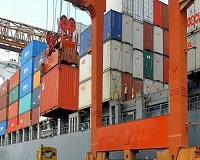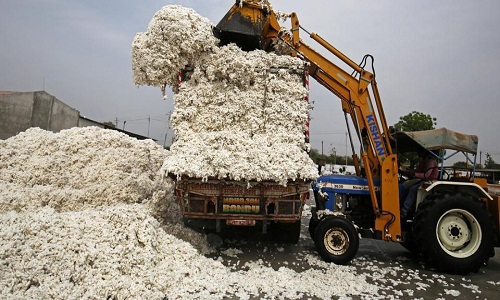"Amid retaliatory tariff measures, tension between the US and China seem to be increasing and the substantial impact would be on cotton imports and exports. As highlighted by Jon Devine, Senior Economist, Cotton Incorporated, China’s cotton imports have been on the rise and are expected to continue climbing over the next several years now that its government-controlled cotton stockpile has dwindled and because it can’t meet demand with its domestic cotton supply. Devine says, China traditionally has a production deficit between 10-15 million bales. That deficit had been filled by reserves in recent years, but with reserves now lower, that gap should be increasingly filled by imports."
 Amid retaliatory tariff measures, tension between the US and China seem to be increasing and the substantial impact would be on cotton imports and exports. As highlighted by Jon Devine, Senior Economist, Cotton Incorporated, China’s cotton imports have been on the rise and are expected to continue climbing over the next several years now that its government-controlled cotton stockpile has dwindled and because it can’t meet demand with its domestic cotton supply. Devine says, China traditionally has a production deficit between 10-15 million bales. That deficit had been filled by reserves in recent years, but with reserves now lower, that gap should be increasingly filled by imports.
Amid retaliatory tariff measures, tension between the US and China seem to be increasing and the substantial impact would be on cotton imports and exports. As highlighted by Jon Devine, Senior Economist, Cotton Incorporated, China’s cotton imports have been on the rise and are expected to continue climbing over the next several years now that its government-controlled cotton stockpile has dwindled and because it can’t meet demand with its domestic cotton supply. Devine says, China traditionally has a production deficit between 10-15 million bales. That deficit had been filled by reserves in recent years, but with reserves now lower, that gap should be increasingly filled by imports.
Cotton faces tariff barriers
With growing tension between the two economies, it remains to be seen how China will satiate its supply of cotton. In the 2017-18 crop year, the US should export 16.2 million bales. In comparison, the next largest exporter is India at 5.0 million bales. It would take the sum of India, plus the next six largest shippers to equal the volume that the US ships.
cotton. In the 2017-18 crop year, the US should export 16.2 million bales. In comparison, the next largest exporter is India at 5.0 million bales. It would take the sum of India, plus the next six largest shippers to equal the volume that the US ships.
In that regard, if China increases its imports by 5-10 million bales over the next several years, it is hard to see how that would not benefit the US because the pool of exportable supply is limited once you move beyond the US. If the US does prove to be unaffordable for Chinese mills with the tariffs, the cotton that is redirected to China from other sources (e.g., India, Brazil) should open up demand for US cotton in other import markets (e.g., Vietnam, Bangladesh) where cotton from non-US exports could have otherwise gone, stated Devine.
As per figures, over the 2012-13 to 2017-18 period, China’s share of US exports dropped from roughly 40 per cent to between 10 per cent and 15 per cent. The implied tightness in exportable supply suggests upward pressure on prices. Collective stocks for the world outside the US are forecast to reach a record this summer, and collective volume will serve as a buffer against a rising tide of Chinese import demand. In terms of supply chain reactions, if the tariffs do remain in place, the flow of cotton through Vietnam could be expected to continue to be profitable.
Considerable gains
Vietnam has seen significant growth in cotton mill use of late. Devine points out, Chinese government controls on cotton fibre imports has fuelled much of that growth. Because there are no quantitative limits on cotton yarn imports (there are limits on the tonnage of cotton fibre) and because duties are either low (5 per cent for India and Pakistan, countries without FTAs with China) or non-existent (countries with FTAs with China, like Vietnam), it was cheaper for Chinese fabric mills to import yarn. A lot of that yarn came from Vietnam, and over half of all the fibre spun into yarn has gone to China for the past several years.
The possibility that the tariffs could result in an economic downturn is a concern. Tariffs can lead to higher consumer prices which means the Federal Reserve may look to more increases in interest rates. Higher interest rates can slow economic growth, and there is a concern that overly aggressive increases in interest rates could be a factor contributing to the next US recession, cautioned Devine.












